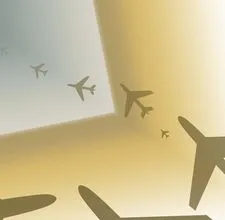
The decade that changed the aviation industry
The last ten years saw airlines in crisis mode but the industry has demonstrated that it can transform itself in the face of challenges, says IATA.
In an e-mail sent to Singapore Business Review, IATA Regional Vice President for Asia Pacific Maunu von Lueders noted that 2010 was the best year of the decade, when the global airline industry made a profit of US$18 billion. The worst year, on the other hand, would be 2008, when the industry saw its worst losses of US$16 billion.
This year, the official said that the unrest in the Middle East and North Africa and the natural disasters in Japan have had an impact on the industry while the current high oil prices will add more downward pressure on airlines’ profitability. Nevertheless, Mr. Lueders highlighted several trends in the aviation industry that still cause it to soar higher as follows:
The industry is safer today. The industry accident rate has been cut by 42% since 2000, with the 2010 global accident rate being 0.61 hull losses per million flights of western-built jet aircraft. While aviation is a lot more secure in terms of security, the degree of hassle and inconvenience for travellers has also increased following the 9/11 terrorist attacks.
The days of low oil prices are now a thing of the past. In 2001, the average price of oil per barrel was US$24.7 and fuel accounted for 13% of airlines’ expenses. Compare that with the US$110 per barrel we are expecting for 2011, accounting for 30% of expenses. Faced with rising costs, airlines have transformed themselves to be more efficient. Since 2001, they have improved labour productivity by 67% and fuel efficiency by 24%, and slashed non fuel unit costs 9% and sales and distribution costs 10%.
Technology makes travel more convenient. The IATA paper ticket, which had been used for air travel since 1972, was phased out in 2008 following the implementation of 100% electronic ticketing, saving the industry US$3 billion annually. A new boarding pass – the bar coded boarding pass – has also been implemented, saving US$1.5 billion and allows travellers to check-in and print their boarding pass at home.
The birth of low cost carriers (LCCs) in Asia. LCCs now accounts for 12% of the market in Asia compared to 30% within the US and 39% within Europe. And the significance of Asia in aviation has also increased. Today, travel in Asia is the single largest market in the world, after having overtaken North America in 2009. And Asia will continue to grow, making up 30% of the market by 2014.
To contact the journalist, you may send your message to krisana@charltonmediamail.com



![SBR 5 Lorem Ipsum News 2 [8 May]](https://cmg-qa.s3.ap-southeast-1.amazonaws.com/s3fs-public/styles/exclusive_featured_article/public/2025-05/a_hand_pointing_to_a_futuristic_technology_5b87c9d0e3_3.png.webp?itok=M3Hf-9XR)
![SBR 4 Lorem Ipsum [8 May Top Stories]](https://cmg-qa.s3.ap-southeast-1.amazonaws.com/s3fs-public/styles/exclusive_featured_article/public/2025-05/a_hand_pointing_to_a_futuristic_technology_5b87c9d0e3_2.png.webp?itok=2m5Wl0MX)


![Exclusive three SBR 12 Lorem Ipsum [8 May]](https://cmg-qa.s3.ap-southeast-1.amazonaws.com/s3fs-public/styles/exclusive_featured_article/public/2025-05/a_hand_pointing_to_a_futuristic_technology_5b87c9d0e3_11.png.webp?itok=8kn_UIfA)
![SBR 3 Lorem Ipsum [ Exclusive 2]](https://cmg-qa.s3.ap-southeast-1.amazonaws.com/s3fs-public/styles/exclusive_featured_article/public/2025-05/a_hand_pointing_to_a_futuristic_technology_5b87c9d0e3_1.png.webp?itok=YCyjLegJ)
![SBR 2 Lorem Ipsum [8 May]](https://cmg-qa.s3.ap-southeast-1.amazonaws.com/s3fs-public/styles/exclusive_featured_article/public/2025-05/a_hand_pointing_to_a_futuristic_technology_5b87c9d0e3_0.png.webp?itok=_cKD-29o)

![Video [Event News]](https://cmg-qa.s3.ap-southeast-1.amazonaws.com/s3fs-public/styles/event_news_featured_article/public/2025-05/screenshot-2025-05-08-at-4.58.53-pm_0.png.webp?itok=Kud35sMs)
![Event News SBR 9 Lorem Ipsum [8 may]](https://cmg-qa.s3.ap-southeast-1.amazonaws.com/s3fs-public/styles/event_news_thumbnail/public/2025-05/a_hand_pointing_to_a_futuristic_technology_5b87c9d0e3_8.png.webp?itok=DTh_dbYp)
![Event News SBR 9 Lorem Ipsum [8 May]](https://cmg-qa.s3.ap-southeast-1.amazonaws.com/s3fs-public/styles/event_news_thumbnail/public/2025-05/a_hand_pointing_to_a_futuristic_technology_5b87c9d0e3_7.png.webp?itok=vzDAzb6V)
![Event News SBR 8 Lorem Ipsum [8 May]](https://cmg-qa.s3.ap-southeast-1.amazonaws.com/s3fs-public/styles/event_news_thumbnail/public/2025-05/a_hand_pointing_to_a_futuristic_technology_5b87c9d0e3_6.png.webp?itok=jvHFc4P6)
![Video [Event News]](https://cmg-qa.s3.ap-southeast-1.amazonaws.com/s3fs-public/styles/video_thumbnail/public/2025-05/screenshot-2025-05-08-at-4.58.53-pm_0.png.webp?itok=yZnI0YBb)
![Video 1 SBR [8 May]](https://cmg-qa.s3.ap-southeast-1.amazonaws.com/s3fs-public/styles/video_thumbnail/public/2025-05/screenshot-2025-05-08-at-4.58.53-pm.png.webp?itok=9AAeRz_k)

 Advertise
Advertise

